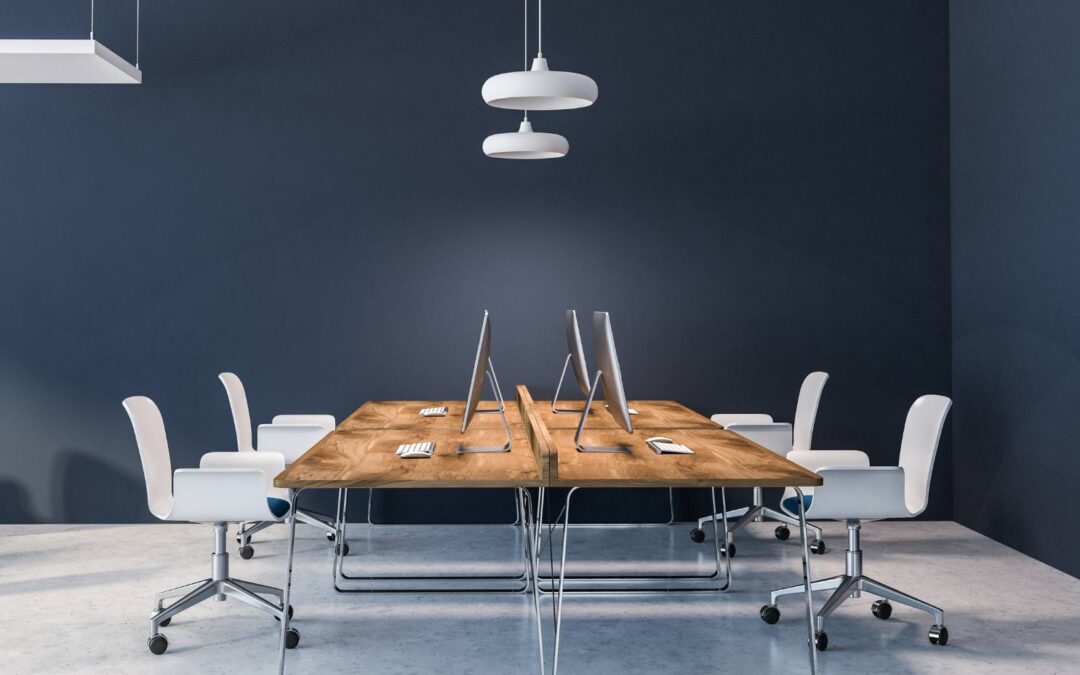Colors are more than just aesthetically appealing elements. It’s quite intriguing how the color scheme you opt for can profoundly influence the emotional state, level of concentration, and overall efficiency of your staff members.
Here’s how it works:
The science of the spectrum
Color psychology tallies the connection between colors and human behavior. Research has shown that various hues influence our moods, emotions, and even our physical responses.
Colors are how our brains interpret light, which in turn shapes how we see color. Some colors can make us feel in specific ways. For instance, red can make us feel excited, while blue can help us feel calm.
How wall color selection can affect employee productivity
Here’s how the choice of color can impact productivity in your work environment:
-
Blue
Known for its calming and serene vibes, blue is a top choice for offices aiming to foster focus and concentration.
Studies indicate that being surrounded by this color can not only lower heart rate and blood pressure but also create an atmosphere of tranquility, which is ideal for activities requiring meticulous attention and precision.
-
Green
It’s all about nature, with this color promoting a sense of harmony and wellness. Green comes in various shades, each with its own vibe.
Lighter greens create a soothing, peaceful ambiance, perfect for relaxation. On the other hand, bolder greens inject a burst of energy and inspiration, stimulating creativity and adding a lively touch to your workspace.
-
Yellow
This color is all about bringing cheer and positivity. It can make you feel awake and full of ideas, which is great for working together or developing new plans. So, if you’re looking to boost creativity and create a lively atmosphere, yellow might be the color for you!
-
Red
Red is known for its ability to stimulate and increase alertness and energy levels. However, it’s essential to be mindful of its intensity, as an excess of red can sometimes feel overwhelming and contribute to feelings of anxiety.
To harness its energizing effects without causing overwhelm, consider incorporating red as an accent color in high-traffic areas or communal spaces where a vibrant burst of energy is desired, such as living rooms or gathering areas.
Light vs. dark colors
When deciding between light and dark colors for your office, consider the impact they can have on the perception of space and atmosphere.
Lighter colors tend to create a sense of openness and airiness, making a room appear more spacious and expansive. On the other hand, darker colors can activate a space with a feeling of coziness and intimacy, drawing focus and creating a more concentrated atmosphere.
When making your color selection, consider the size of your office and the ambiance you wish to cultivate.
Natural light
The amount of natural light in your workspace will also play a role in how color is perceived. If your office has limited natural light, opt for lighter colors to avoid a cave-like feel.
Transform your office with the right paint color and boost productivity!
Choosing the right paint color can really change how your office feels. By knowing how colors affect mood and behavior, you can make a workspace that helps everyone work better and feel happier.
Want to make the most of your office? Contact Stirling Painting for a free estimate. Our experts can help you pick the best color that boosts employee productivity and makes your office look awesome.



Recent Comments